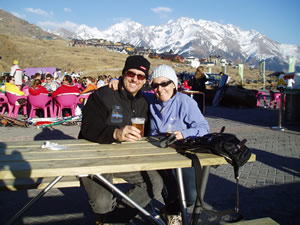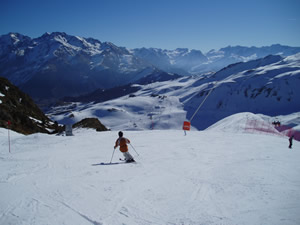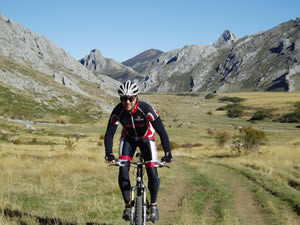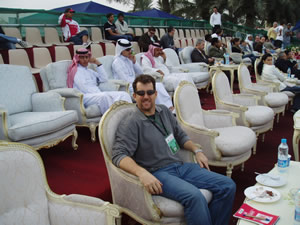By Andrew Hood
Sticker shock induces gas
March 12, 2008 —
Europe has never been accused of being a car-friendly continent. People walk here, ride bikes or take high-speed trains. When they do drive, they generally do it badly and too fast.
That shouldn’t come as a complete surprise, of course. When Rome, Paris and London were taking root, a mule with a cart was the day’s form of mass transit. Or a good pair of sandals.
These days, governments do their best to nudge people out of their cars. Taxes on licenses, gas and tolls are exorbitant. In London, drivers must pay a daily fee of $10 just to drive into the city.
Negotiating through Europe isn’t easy, either. Rather than route traffic with basic cardinal directions, such as something as simple as I-70 West, traffic signs in Europe instead feature the next major city along the way. An integrated system of color-coded signs and route numbers makes sense, but only after you decipher the Rosetta stone.
I’ve driven for a decade through Europe and believe me, unless you have the genetic coding of a GPS seared into your brain, you will get lost.
Rail passes and cheap, low-cost flights are the best option for moving between major cities.
Driving on Europe’s lesser-known byways still has its allure, of course.
With your own set of wheels, you’re not tied to a time schedule, you can go where you damn well please and explore those hard-to-get-to nooks and crannies that still exist far from the tourist throngs.
There’s nothing better than stumbling upon your own private castle and having it all to yourself.
Freedom, just like in America, comes with a price, more so these days with the dollar tanking faster than the Titanic.
Driving in Europe is pricy, so much so that it’s almost becoming an elitist endeavor.
With oil topping $100 a barrel, the price of petrol is making American-style road trips in Europe cost prohibitive except for groups of people sharing costs.
Two weeks ago, we drove to six hours from León to ski for the weekend in Formigal. The 500-mile round-trip, with gas and tolls included, tapped me out $150. Pricy for a weekend trip.
In France, gas has reached a stunning 1.45 euros per liter. Do the math: 3.785 liters per gallon times 1.50 dollars to one euro, and a gallon of gas in the land of the inventors of freedom fries costs a brake-inducing $8.25 per gallon.
Consider the costs after my recent drive from Beauvais (a small airport about 1 hour north of Paris) to Orleans, about 1 hour south of Paris. The total was about 300 kilometers (180 miles). I used about 38 euros in gas (about $55), paid 12 euros in tolls (about $18), all for the simple pleasure of getting stuck in Parisian traffic for 1 hour.
Compare that to the two-hour flight from Madrid to Paris on Ryan Air – a whopping 0.99 euro cents. Ryan Air is one of those low-cost, no-frills airlines turning the airline business upside down. Add taxes and other charges, the OW ticket was only 27 euros ($40).
That beats driving any day.
![]() Submit a comment on "Sticker shock induces gas"
Submit a comment on "Sticker shock induces gas"
Special to realvail.com
Skiing Spanish-style
March 3, 2008 —
Spain is renowned for its tapas, bullfights, beaches and paella. Skiing is not on the top 10 list.
That’s not to say there’s not some excellent skiing south of the Pyrenees. There are no less than 20 ski areas sprinkled throughout the peninsula, including Sierra Nevada, which towers over the Mediterranean beaches just 20 miles away in the heart of Spain’s Andalucía region.
The best skiing is found in the Pyrenees, where summits can reach higher than 10,000 feet. Midget mountains by Colorado standards, but high enough to serve up decent snow conditions.
For years, we’ve been hanging in Valle d’Aran, the “Aspen” of Spanish skiing thanks to its bevy of movie stars and polticos that hang out in the stunning valley. The King of Spain owns a home at the base of Baquera-Beret and most of Spain’s nouvelle rich are drawn to the slopes for Christmas and Easter holidays.
My brother-in-law was doing his best Colorado ski bum imitation and generously gave us prime couch space within eyeshot of the chairlifts in exchange for cold beer and homemade quesadillas. Couch surfing is truly international.
Luís, however, has high-tailed to India in search of spiritual enlightenment, leaving my wife and I with the unsavory prospect of paying for our skiing accommodation.
Anxious to try something new, friends told us about Formigal (www.formigal.com). Loaded with expert steeps and out-of-bounds runs, we made the six-hour drive to the Aragon Pyrenees psyched to get the boards strapped on for the first time all winter.
Global warming is killing off the ski industry in Spain. The past three winters have seen below average snowfalls and the entire nation is bracing for a summer drought that could be the worst in 20 years.
Formigal, however, isn’t taking it sitting down and boasts the most modern snowmaking system in the country. Add a state-of-the-art chairlift system, and Formigal is more like Vail than anyplace else I’ve skied in Europe.
When we arrived for the last weekend of February, there was just enough snow to keep us satisfied. Tickets were 40 euros a day, a bargain by U.S. standards even with the tanking dollar.
More than 60 miles of trails were open, plenty to give us leg burn through the middle of the first day. Bumps were softened up by the strong Iberia sun and made for easy spring-skiing conditions.
The best snow was high up on a north-facing ridge served by rope tows where locals were ripping on ideal conditions. The views of Anayet (2559m), Pico de Escarra (2760m) and Peña Reiona (2761m) were stunning and I was storing away the information to come back later this summer to do some hiking.
We found a great room at Hotel Balaitus (www.casadelreyno.com) in nearby Sallent de Gállego, a backwater village that just happened to be at the foot of the best snow in Spain. Think Minturn with a Spanish accent and you get the idea.
The best came after the slopes closed. We hit après on the decks at the base of the mountain before hitting some rowdy bars in nearby Formigal.
From there, we went back to Sallent to regroup for dinner. Reservations are key and we ate like kings on grilled fois gras, artichoke baked with Spanish ham before two giant steaks. Add a cheesecake desert, a bottle of tangy Rioja wine and after-dinner chiputos, and the 70-euro price tag seemed downright egalitarian.
Too bad the dollar is trading at an all-time low. And good thing the wife was paying that night.
![]() Submit a comment on "Skiing Spanish-style"
Submit a comment on "Skiing Spanish-style"
Special to realvail.com
How I became a Belgian
February 21, 2008 —
When I wed my lovely Spanish lass some six years ago, I imagined my new life would be spent idling away the nights devouring tapas and tangy bierzo wine after blissful days of spinning my bike past vineyards and castles.
Perhaps I should have done a little more due diligence ahead of taking my holy vows.
Little did I know that León is derisively called the frigorífico de España, the refrigerator of Spain. Tucked up against the wild Cantabrian mountains, where Europe’s last grizzly bears and a growing population of Iberian wolves still roam, León is baking hot in the summer and bitterly cold in the winter.
Think Laramie with a heavy Spanish accent.
While summers are short and hot, winter lasts longer here than a French railway worker’s strike. When the rest of Spain has broken out of the grip of winter and enjoying sunny spring days as soon as late February, León is still cold. And it stays cold well into April and May.
There’s a popular refrain that’s describes León’s lingering mush of gray skies and cold winds: Hasta el cuarenta de Mayo, no se quita el sayo, which loosely translates to, until the 40th of May (ie., June 10), don’t put away your winter jacket.
If you ride a bike in León, you keep your sayo close at hand. And your leg warmers, tights, gloves, vests and shoe covers, too.
My first winter here saw me facing this new reality. Storms systems swirling out of the northern Atlantic would plow into León, leaving behind rain, bone-chilling temperatures and blustery wind.
I said to hell with riding and stayed warm by throwing down chupitos of tangy orujo or sweet pancharán. It was simply too cold and windy by my fair-weather standards and I refused to ride until weather improved. Soon enough, I hardly rode at all.
In Colorado, wait two hours and the weather changes. In León, waiting for good weather simply meant getting fatter.
Grudgingly, with my curva de felicidad (the curve of happiness, reserved for married men firmly off the market) growing ever larger, I began kitting up for wintertime rides.
Each afternoon, I would waddle out of the door of our flat along the Rio Bernesga and look at the leaf-less branches to get a fix on which way the wind was blowing. I would ride one hour or so into the wind, then let the tailwinds push me back home in time for lunch.
Finally this winter, I became a Belgian.
I stopped worrying about the wind or the cold or the rain.
I threw out my 10C rule (about 50F) and started riding just about any day that was short of a major deluge.
The wind became my own poor-man’s SRM system. I could gauge my efforts by how hard the wind was blowing against the length of my ride to formulate my expended energy (equated, in my mind, on how many tapas I could safely eat later that night without gaining back too much happiness in my girth).Even the rain became an afterthought.
Finally, I didn’t care what the weather was. Riding when it was cold and miserable became some sort of twisted badge of honor. Only once this winter have I turned back for rain.
Sure, I’d love to ride in the sunnier, milder climes along the Costa del Sol or Mallorca. But there’s no leaving León. And I’ve finally accepted that. And I couldn’t be happier.
![]() 1 Comment on "How I became a Belgian"
1 Comment on "How I became a Belgian"
willoughby — April 7, 2008
dude, nice tights.
![]() Submit and read more comments on "How I became a Belgian" now!
Submit and read more comments on "How I became a Belgian" now!
Racing the Casbah in Qatar
January 30, 2008 —
One of the great things about being a cycling scribe is that it gets you places.
If there’s a relatively decent stretch of a road, chances are good that someone’s going to run a bicycle race down it. Cycling is truly a global sport that extends to all continents. I’m not sure if penguins can race bikes yet, so Antarctica is the possible exception.
I’ve been lucky enough to chase bikes all across North America, Africa and Europe. Now I can add the Middle East to that list.
This week, about 20 cycling hacks were flown into the oil-rich nation of Qatar, a short stub of a country that juts out into the Persian Gulf like a hitchhiker’s thumb, for the 7th annual Tour of Qatar.
It’s a relatively easy affair for the 130 or so professionals here on teams from Europe, Asia and the United States. Stages are short, there are no mountains, and the weather beats the cold and wind of Belgium in January. Spending the week at the super-luxurious Ritz Carlton-Doha isn’t bad, either.
Home to about 200,000 native-born Qataris and probably quadruple that number in immigrant labor, Qatar isn’t much bigger than Colorado’s Front Range.
Once dominated by the Ottomans and then a forgotten British protectorate that was home to errant Bedouins and a brisk pearl-hunting industry, Qatar shot to prominence after rich oil and natural gas deposits were discovered in the 1940s.
Flush with petro-dollars, Qatar is heavily investing in the future, building world-class amenities and infrastructure at breakneck speed. Glass-smooth highways scour the barren desert landscapes where only a few lone camels dot the otherwise bleak horizon.
Armies of workers flown in from India and Nepal toil like ants over literally hundreds of skyscrapers racing to fill the horizon (paid a miserly $100 a month, a local told me). It’s as if Qatar is trying to build the Manhattan skyline in a decade.
Luxury knows no limits here where every Qatari citizen receives upwards of $10,000 per month thanks to its oil and gas booty.
And almost no one here has a real, full-time job, and why would you with that kind of stipend?
Home of the Al Jazeera TV station and one of the Middle East’s most modern universities, Qatar is trying to move into the modern world without forgetting its traditions and customs.
Unlike some of its more austere neighbors, women can drive in Qatar and aren’t exiled to hide behind the oppressive burkhas. Both men and women proudly wear traditional clothing, however, but there’s a hint of Gucci and Dolce & Gobanna hidden behind the veils.
It’s certainly not without its quirks. Drugs equal immediate execution and liquor can only be purchased in the five-star hotels catering to western business executives, but you get a sense here that Qatar is trying to mix elements of the modern world without turning its back on its roots.
So why a bike race in such an unlikely place?
About a decade ago, the ruling emir was traveling with his entourage to his summer home in southern France when traffic came to a screeching halt. Frustrated, the emir got out of the car and confronted the French gendarme blocking the road.
“I am the ruler of Qatar! I am going to cross the road!” he shouted, or so the story goes. The gendarme wagged his finger and said that’s not possible. Emir or not, the road was closed for the Tour de France.
The emir resigned himself to the wait and readily joined the party that inevitably lines any stage of the Tour as fans pass the hours before watching the passing peloton.
It just so happened that the emir’s official photographer was Belgian, who explained to the curious emir the colorful history of the Tour. He proudly said that Eddy Merckx, cycling’s greatest rider ever, was also Belgian.
The emir said he wanted to meet this Eddy Merckx and hold a race of his own in Qatar.
Merckx flew down to meet Qatari officials, who were already investing billions to develope the world-class Aspire training center, which hosts athletes from all over the world in 11 Olympic sports.
Things moved quickly, and Merckx tapped officials from the Tour de France to help organize the race. It was first held in 2001 almost as a publicity stunt, but what the Qataris do, they do well, with the intention of being among the world’s elite.
The race is now in its seventh edition and attracts top pros like former world champ Tom Boonen, who uses the high-speed spins across the desert to hone his form ahead of the punishing one-day spring classics in April.
There’s even talk of bringing the Tour de France to Qatar for one of its lavish grand départs for a few stages before flying first-class back to Europe.
Nothing’s impossible in Qatar.
When riders complained there were no tough hills in Qatar, the emir replied: “If they want l’Alpe d’Huez, I’ll build a mountain.”
![]() Submit a comment on "Racing the Casbah in Qatar"
Submit a comment on "Racing the Casbah in Qatar"


















